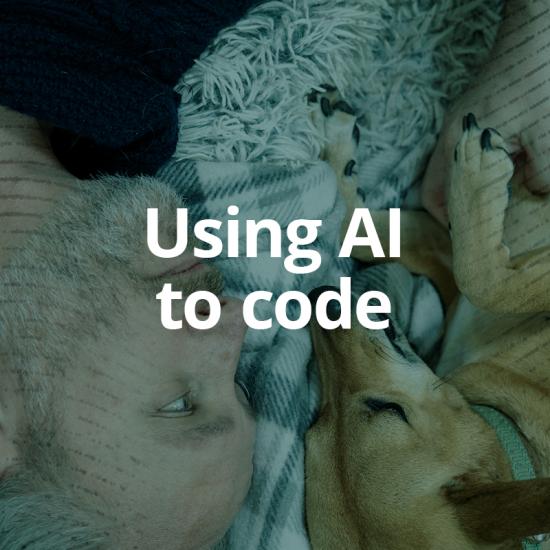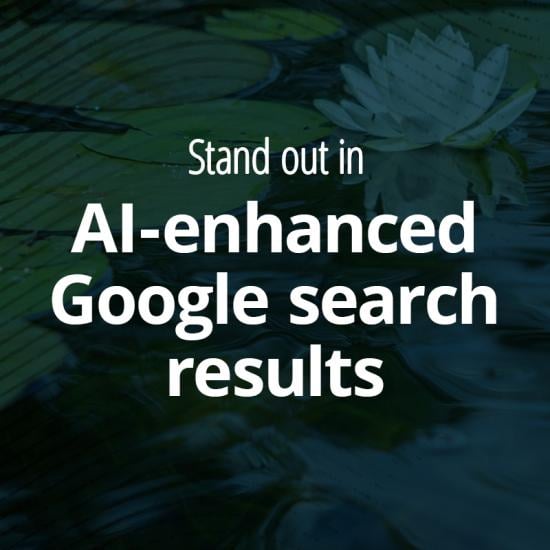
Future-proofing college enrollment in 2025 & beyond
For decades, Americans have viewed a college degree as a springboard to social and financial mobility. High school students study hard, choose a career path by 17 or 18, graduate from a four-year college or university and steadily climb the career ladder.
But much like the housing market shifts between favoring buyers and sellers, higher education is entering a student-driven era. A college degree is no longer viewed as essential for career success, and universities must rethink how they attract and engage students who are weighing more options and consuming more marketing messages than ever before.
This shift stems from several economic and societal forces at work, including:
- The number of U.S. high school graduates peaking in 2025, due to both declining birth rates and demographic changes
- Fewer graduates attending college, with sharp enrollment drops in the West (-20%), Northeast (-17%) and Midwest (-16%)
- Shifting public attitudes and skepticism around the cost, value and ROI of a degree
- Declining international student enrollment, influenced by government policy changes and increasingly negative perceptions of studying in the U.S.
- A trend of students staying closer to home for college, driven by rising costs, economic uncertainty, family responsibilities and emotional ties to their communities
To stay competitive and attract top talent in 2025 and beyond, colleges and universities must do more than acknowledge these cultural shifts — they must reimagine their recruitment and enrollment strategies to align with the expectations of a new generation.
Modernizing recruitment tactics for the class of tomorrow
Attitudes about the value of higher education are changing fast, but institutions can’t afford to disregard their core audience: high school seniors and recent grads. Rather than simply adjust messaging, schools must evolve their offerings to meet the expectations of today’s students, which means more flexibility, more real-world relevance and more value.
So, if generational attitudes are shifting and traditional tactics are losing traction, how can colleges reach recent grads in 2025?
- Think local, act hyperlocal: Focus first on hyperlocal prospects already located in your city, including those seeking online programs. Students familiar with your brand, close enough for campus visits and engaged in campus events are more likely to enroll.
- Embrace digital learning: Online programs are no longer optional; they’re essential. Whether juggling work, kids, caregiving or other responsibilities, today’s students need flexible and accessible options. Prioritize digital learning that’s just as engaging and supportive as the on-campus experience.
- Don’t overlook underclassmen: Seniors may be the obvious audience, but reaching underclassmen, even middle schoolers, can pay off in the long term. Early exposure through summer enrichment programs, for-credit courses and campus events builds familiarity and lasting connections, making the decision easier when it’s time to apply.
- Tap the transfer market: Students home from college for the summer are a valuable, often overlooked audience. A single summer course can spark interest and open the door to a future transfer. With 70% of transfers coming from in-state schools, it’s worth targeting this highly local, high-potential market.
Look to Winona State University for inspiration. Facing a highly competitive recruitment cycle, the university partnered with Vendi to rethink how it connected with prospective students.
Through brand-perception research and audience segmentation, Vendi uncovered what truly mattered to students and families and built a campaign that spoke directly to their goals and values. The campaign extended across digital ads, emails, billboards, TV and more, uniting bold creative with targeted media placement to meet students where they were, both online and off.
Helping adult learners re-engage with higher ed
In 2024, nearly one million adults who previously attended college but didn’t earn a degree re-enrolled in higher education.[1]
Often equipped with real-world experience and clearer goals, these adult “stopout” students are highly motivated, but they want proof that returning to school will be worth it. They’re driven by data, career outcomes and the confidence that their investment will lead to tangible returns. Just as important is acknowledging that adult students’ lives look very different from those of fresh high school grads. Programs must be highly flexible and offer on-campus, hybrid and fully remote options that serve nontraditional students with busy schedules.
To reach stopout students, show them the evidence, such as:
- Graduation rates
- Regional job opportunities
- Job placement statistics
- Employer or corporate partnerships
- Testimonials from students like them
UW–Madison Online is a strong example of how to connect with stopout students through smart strategy and authentic storytelling. Vendi conducted research and interviews with graduates who had previously left college and later returned to complete their online degrees.
The interviews revealed the barriers stopout students faced, the realities of their work and family lives and what helped them succeed the second time around. Those insights shaped a video campaign featuring real students sharing their stories, which helped prospective adult learners see themselves in the outcomes. In its first month, the campaign drove a huge increase in lead conversions and an even larger drop in cost per conversion — clear evidence that research- and insight-driven creative can meaningfully re-engage this high-potential audience.
Upskilling young and mid-career professionals
With 30.4 million baby boomers set to retire in the next five years, the U.S. workforce is undergoing a massive generational turnover. As experienced workers exit, employers will need to be increasingly focused on upskilling and reskilling their employees to retain knowledge and remain competitive.
At the same time, young and mid-career professionals are eager to grow. They want to expand their skills, accelerate their careers and stand out in a crowded job market. Many value learning and growth opportunities just as much as compensation or culture when choosing where to work.
Together, these trends are fueling a pipeline of highly motivated adult learners who need to complete a degree or certificate or sharpen their skills to level up. To attract them, marketers should:
- Prioritize programs for the industries most affected by the workforce turnover, especially healthcare, manufacturing, construction, education and science/technology
- Make it easy for businesses to connect employees to programs that are relevant, future-focused and aligned with current and future skills gaps
- Remove barriers for learners with online, asynchronous, customizable and stackable program options
- Build targeted marketing strategies and creative assets that raise awareness of corporate partnerships and highlight clear benefits for both employers and employees
The future of higher education belongs to schools that stay agile, audience-aware and focused on what today’s learners really need.
At Vendi, we help colleges and universities rethink recruitment, sharpen messaging and deliver flexible, student-first digital experiences that drive results. Whether you're courting high school grads, targeting adult learners or upskilling professionals, get in touch, and we’ll help you reach them with smart strategy and creative that cuts through the noise.
Sources
“The Coming Decline in High School Graduate Counts, in 5 Charts” – Higher Ed Dive
“Online College Students Report 2024” – Education Dynamics
“Transfer Enrollment and Pathways” – NSC Research Center
“Some College, No Credential Student Outcomes” – NSC Research Center [1]
“The Cost vs. Value Paradox: What Americans Really Think About College” – Lumina Foundation


